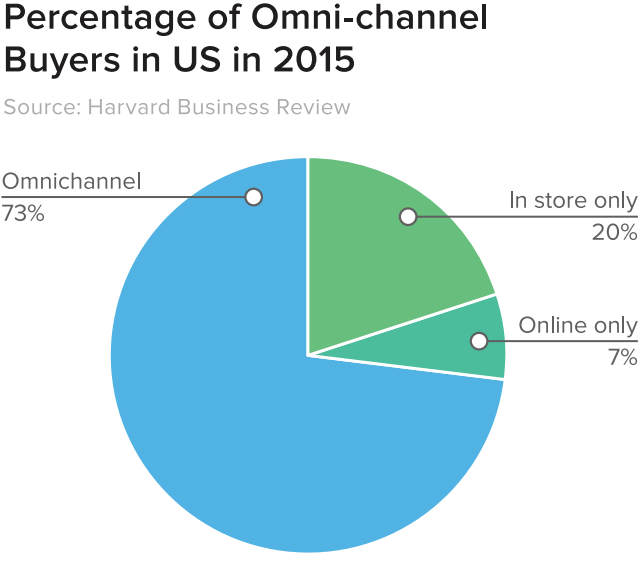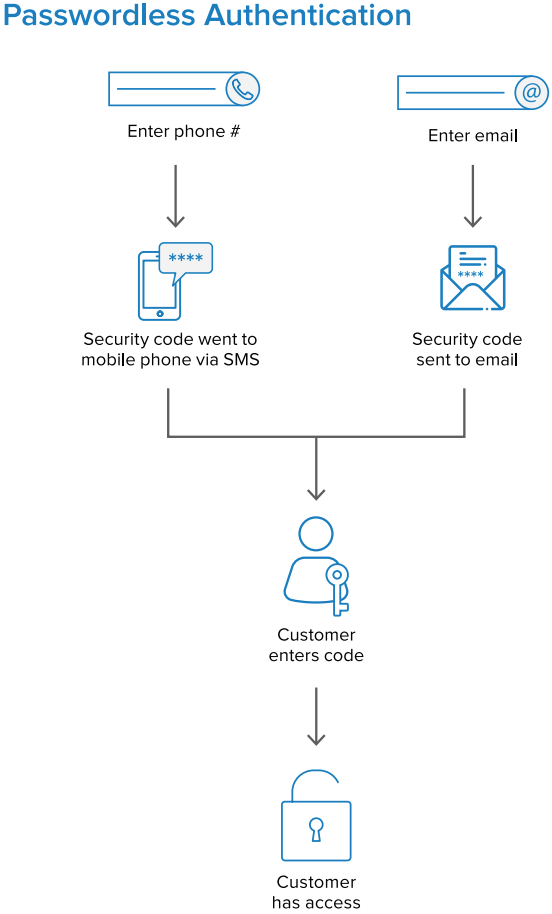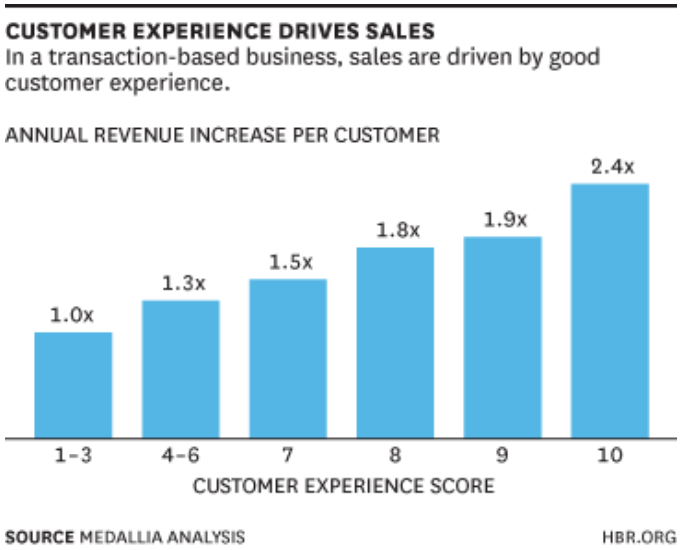Four Ways to Improve Customer Experience with a Modern Identity Service
Organizations want their dev teams to roll out great new experiences that attract and retain customers while improving their lifetime value. However, today’s end users are trained by the Googles, Amazons, and Facebooks of the world to disengage from experiences that aren’t technologically advanced, frictionless, omni-channel, and relevant.
You are struggling to find enough developers to execute on all the things you’re trying to accomplish. Important initiatives are weighed down by the burden of legacy infrastructure, including outdated identity systems (e.g. WAMs) built for yesterday’s apps.
Developers are moving away from monolithic app architectures towards modern app development, leveraging new methods and tools such as API first, containerization, and microservices.
In order to unify the customer experience and drive engagement, there needs to be an identity layer serving as the connective tissue between apps, devices, channels, and experiences. A modern identity service helps dev teams speed up time to market and deliver the following key product attributes that drive engagement:
• Seamless omni-channel experiences
• Simple, compelling, and self-service onboarding
• Frictionless and secure experiences
• Personalized interactions
Modern identity enables seamless omni-channel experiences
Even though Amazon is the undisputed king of online retail (accounting for 40% of online sales in 2018), the e-commerce giant isn’t just doubling down online. It acquired the grocery store brand Whole Foods and will be opening up retail locations to serve omni-channel customers.
Omni-channel customers (roughly 70% of buyers) prefer to use multiple touch points when making buying decisions. They blend online experiences (web, mobile, and social) with physical experiences.
Companies often struggle to meet the needs of omni-channel customers. They lack the expertise to build and optimize the experience on each app and ensure seamless switching between channels. They need to recruit and retain more development resources to build and manage these apps.

Lack of identity and security expertise ultimately puts go-live timelines at risk. Brands can avoid such challenges using Okta’s secure identity service. JetBlue, the major US based airline, did just that to support its vision for Frictionless Travel.

The key to Frictionless Travel is seamless, personalized, and omni-channel customer experiences. JetBlue needed a secure identity service to help them support omni-channel customers with differing levels of access and user types and manage the policies that apply to each individual.
For example, some JetBlue customers are involved in the TrueBlue loyalty program or pay for certain premium services. These users expect a personalized experience across digital touch points and interactions with support staff, crew, and partners.
To complicate matters, those access rights are constantly evolving: new customers join the loyalty program and partners expand their offerings. While a seamless experience is paramount, so is making sure the right people always have access to the right information.
Okta provided JetBlue with an identity service that enabled the airline to easily and quickly roll out unified, omni-channel experiences to customers. Okta’s flexible policy framework allows the consistent application of policies across channels. Okta’s UI allows JetBlue’s team to perform ongoing maintenance, make changes, and implement updates without more code, further reducing overall total cost of ownership. The full case study can be found here.
Does your identity system support high quality onboarding experiences?
Onboarding complexity has greatly increased with the move to modern application architectures. End user identities must be managed across microservices, CRM systems, marketing tech stacks, and security stacks. At the same time, the end user experience must be compelling, simple, secure, and self-service. 72% of people expect onboarding to take one minute or less.
The challenge for many orgs trying to modernize onboarding is building on legacy identity, which is fraught with hurdles that grind new projects to a screeching halt. Developers are slowed by the mess of spaghetti code resulting from lack of upkeep and years of one off solutions. They wind up pushing out volumes of custom code that are laden with vulnerabilities.
And yet the onboarding experiences they push out must be compelling, simple, self-service, and secure — regardless of the customer’s stage of engagement (e.g. signing up, logging in, or making a transaction). Any friction in the onboarding experience can result in customers abandoning the process and switching to a competitor.
In order to avoid friction and simplify onboarding, brands utilize Otka’s identity service for modern onboarding scenarios—such as self-service registration and passwordless login. In 2015, TAL, one of Australia’s largest life insurance specialists launched a consumer offering. New to consumer, TAL turned to Okta for help rolling out self-service registration for the first time.

One of their consumer products, an online quote and application experience, required a more tailored onboarding experience than standard login. Existing customers were known to interact with TAL infrequently; only logging in one or two times each year to renew their policies or download invoices for tax purposes.
After a years time, customers would forget their passwords and have to go through a reset process. It was a bad customer experience and put additional strain on TAL’s support team. In order to find a solution, Okta helped to facilitate a passwordless authentication process.
Instead of constantly resetting passwords, customers now only follow a short registration process with a policy number and an email address as identification. To log in, a customer enters their email address or mobile phone number and TAL sends a security code. After entering the security code, customers can instantly access the information they need.

TAL has now successfully opened its consumer channel with the launch of a customer self-service portal supporting two brands, My TAL and Insuranceline, both running on the Okta Identity Cloud. TAL was able to quickly create a modern onboarding experience to attract new customers. After selecting Okta, it took just six weeks to deploy and become active.
Identity must enable frictionless and secure customer experiences
Customer experience is a big motivator for buyers. Customers with the best experiences spend 140% more than those with the worst experiences. The chart below shows revenue increase multipliers based on customer experience scores. Those who reported the top customer experience scores showed 2.4x increase in annual revenue.

However, customers expect experiences that are both seamless and secure. According to a recent Salesforce State of the Connected Customer report, 75% of consumers expect companies to provide a consistent experience wherever they engage (such as via websites, social media, mobile, IoT connected devices, or in person).
At the same time, consumers are more protective than ever over their personal data. 70% of them will abandon business dealings with a brand following a breach.
One of the major challenges confronting brands is to enable seamless experiences while contending with identity standards that are constantly changing (SMS for MFA being in and out of favor, biometrics, passwordless, etc.). Companies need to be able to adapt quickly.
Staying up to date on the latest security and identity developments requires a dedicated development team that is not laser-focused on the core business, reducing developer productivity. Not having the latest technology can result in customer churn.
More and more organizations facing these challenges turn to Okta to help them avoid creating additional security risk and remain focused on creating better experiences.

Heal is a healthcare technology company working to deliver a mobile experience where customers and doctors are able to interact. On the one hand, they want doctor and patient interactions to be seamless. On the other hand, Heal has to secure patient data to ensure HIPAA compliance. From a records and data privacy standpoint, healthcare is increasingly complicated, and it goes far beyond securing PII. Patient records must be kept completely safe.
Heal turned to Okta for solutions to a set of complex identity challenges, including multi-factor authentication, fraud prevention, and API security. Okta helps ensure Heal stays HIPAA compliant by removing the burden of managing customer identity so Heal can focus on building it’s core experiences.
At the same time, Okta ensures customers can seamlessly log in to their mobile app while retaining the login for a period of time using Okta SDKs, preventing the need to reauthenticate while remaining secure.
Doctors can carry an iPad with other third-party apps on it, which they use to take notes or look up information. Okta helps Heal integrate with partners via SAML so doctors don’t have to switch between multiple logins, but can still use those apps safely. The full case case study can be found here.
Identity is at the core of personalization
People want to feel appreciated and valued, so it makes sense that personalization is critical for improving engagement. In fact, eight out of ten customers are more likely to do business with a company if it provides personalized experiences.
The key for organizations trying to build out more personalized experiences is a 360-degree view of the customer. However, customer data is often siloed across the technology stack, and managing multiple customer data stores can be manual, error-prone, and costly.
This makes it difficult for organizations to gain full customer insights, and introduces the risk of presenting irrelevant content or offers to their customers. Customers may then churn and choose a competitor.
Brands turn to Okta to support personalization by unifying their customer identities from across disparate identity stores.

Albertsons, one of the largest U.S. grocery retailers, has 30 million customers interacting with its almost 20 retail grocery brands, including Safeway, Vons, and Acme Markets. Albertsons has an omni-channel experience that connects customers across grocery store brands, rewards and loyalty programs, and ecommerce portals.
Personalization is very important to Albertsons because customers expect unique experiences across the Albertsons portfolio of grocery stores—for example, the Safeway experience is different then the Vons experience.
The challenge for Albertsons was to deliver a personalized, branded experience to customers, while at the same time unifying identities across disparate identity stores inherited via acquisition.
Okta helped Albertsons create a single and consistent login experience that was individually branded, yet seamless and secure. Okta’s Universal Directory helped Albertsons break their customer data silos, creating one unified customer management store.
Their customers enjoy a frictionless experience when logging in and redeeming rewards via Albertsons’ unified loyalty program, increasing the value generated for the customer and thereby leading to greater loyalty and top-line revenue. The full press release can be found here.
One identity platform connects the customer experience and drives engagement
A modern identity service is the connective tissue that speeds up time to market for delivering seamless, secure omni-channel experiences; simple, compelling, and selfservice onboarding; and personalization.
Organizations can depend on Okta for a future-proofed identity service, thereby eliminating the need for dedicated identity headcount. We help you keep pace with technology leaders while keeping your developers focused on customer engagement.
Customers love our vendor-neutral, best-of-breed approach with pre-built integrations to your current or planned marketing and digital technology stacks. We support a broad range of B2B and B2C use cases, so we have great flexibility in designing a frictionless end-user experience based on your unique security and complexity requirements.
We offer products for technical and non-technical audiences with our broad APIs, SDKs, and widgets. We provide a set of customizable building blocks to create hand-tailored customer journeys. This gives organizations flexibility in who can manage the customer experience.
Born and built in the cloud, Okta enables customers to innovate and scale at the speed they want, rather than the speed that their infrastructure dictates.
About Okta
Okta is the foundation for secure connections between people and technology. Our IT products uniquely use identity information to grant people access to applications on any device at any time, while still enforcing strong security protections.
Our platform securely connects companies to their customers and partners. Today, thousands of organizations trust Okta to help them fulfill their missions as quickly as possible. For more information, go to https://okta.com